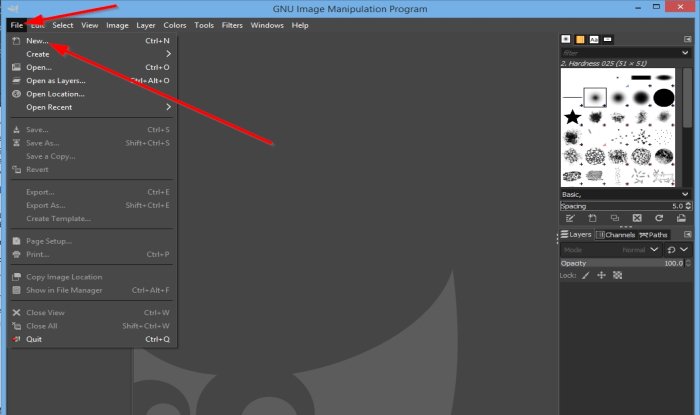
:max_bytes(150000):strip_icc()/009-make-a-custom-gradient-in-gimp-1701680-297b53ddef014d2285c5680818f08354.jpg)
what's the correct way to get the white (or any color) background pixels to be made transparent - and preserving anti-aliasing in the process? It's easy in GIMP, but I haven't found how to do it in any version of Pixelmator. The program can be in color mode or two-color black-and.
#GIMP REPLACE COLOR FULL#
what is the correct way to change the "white" (or any color) so it's transparent, and it preserves the full anti-aliasing in the same way as GIMP? The program opens and saves files in Windows bitmap (BMP), JPEG, GIF, PNG, and single-page TIFF formats.

If I use masks, I can get _some_ anti-aliasing, but it's not the same anti-aliasing as the original, with the difference between the original and the "mask to transparency" shown below: The gray pixels on top are a problem, because they can be visible if put on a black background, like so:

The image below has "gray" pixels on the top of the text, and the bottom loses all anti-aliasing: Use the color spectrum to choose a hue, and then set the saturation and value. GIMP will open a complete picker window, providing a wide range of options for selecting a new foreground color. As far as I've been able to use it, masks have the same problem too. You can change your foreground color by clicking the square in the upper left (the white one, in the image above). With Pixelmator, I seem to have to choose between less effective options, where I either end up using the select color tool, which will select too much (or not enough) of the black text - either leaving "grey" pixels from anti-aliasing, or removing the anti-aliasing altogether. (If you put a black background behind the layer, it stays all black, because there are no "white" pixels there - there are only the black and alpha/black pixels: Step 2: Let’s start by opening an image by going in the file menu then open or press Ctrl + O. Step 1: First we will need some stock images which you can download from any stock image sites like Unsplash or pixels. With GIMP, it just works.Įxample: I start with the following (zoomed in) anti-aliased image:Īnd a couple of clicks in GIMP, and I get an image with the White changed to transparent - and the anti-aliasing remains correct. Another use of changing the background is to bring more contrast between the subject and the background. You'll have to zoom in quite a bit to see any of what I am trying to show.Īlso keep in mind, the color may be any solid color - blue, heliotrope, whatever. Gimp has a "Color to Alpha" option, which is useful to easily remove a colored background from an image, while also preserving anti-aliasing. I'm liking Pixelmator, but there's one feature from GIMP that I'm missing - and I'm not quite sure how to do the same thing in Pixelmator.


 0 kommentar(er)
0 kommentar(er)
